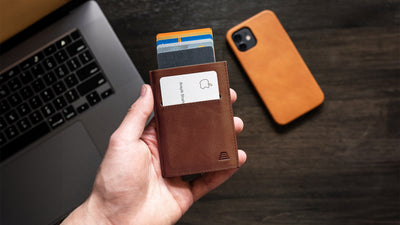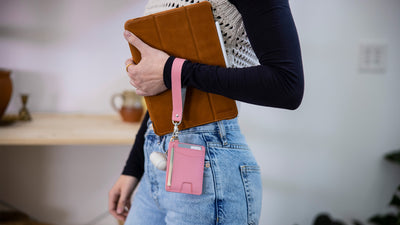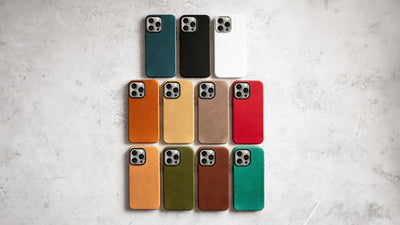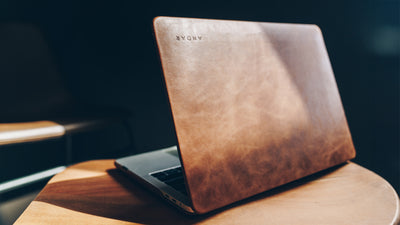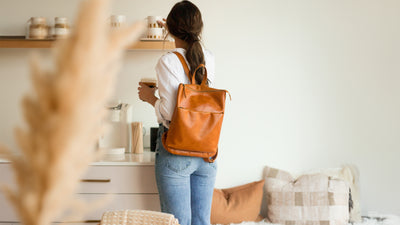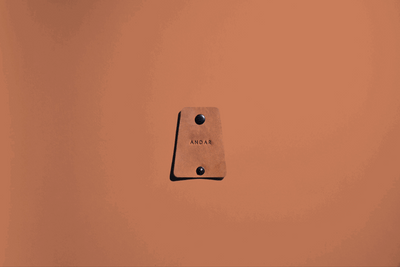The Blog
Is Leather Waterproof? Our Complete Guide On Leather and Water
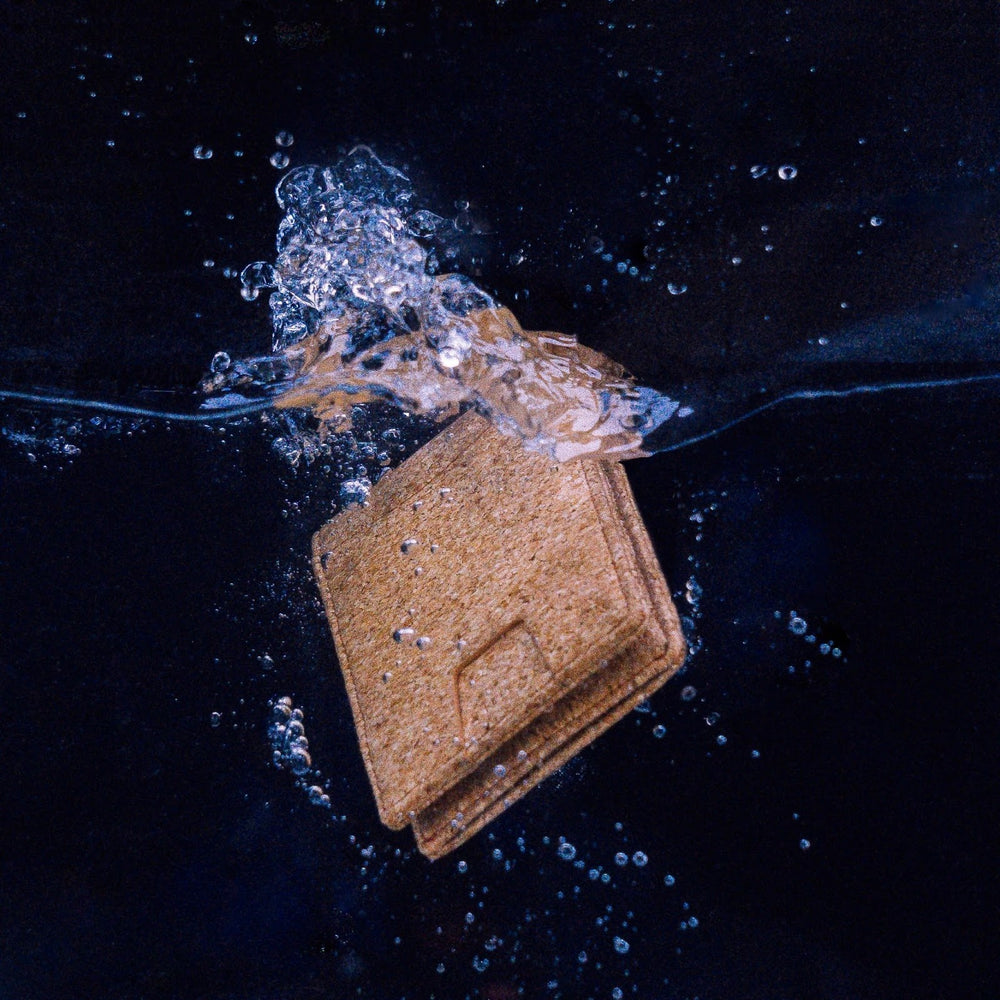
Ensuring that your leather products are protected from the wear and tear of everyday life is an important factor to consider when purchasing a leather wallet. One of the biggest culprits: water. Whether it be water from the rain or from another source, you want to make sure your wallet can withstand it.
Now for the ultimate question: is leather waterproof? Here is our complete guide on everything you need to know about leather and water.
Is Leather Waterproof?
When you’re walking to work on a rainy day and forget your umbrella, it’s especially hard to keep your leather wallet or bag completely dry. So it’s a good thing that a little bit of water won’t hurt the leather all that much.
But does excess water cause damage? To understand this, we need to know the difference between waterproof and water-resistant.
Waterproof vs. Water Resistant
Although they are similar, waterproof and water-resistance aren’t the same thing. These concepts are essential to understanding your leather products, especially the ones you use for everyday use.
The short explanation is that water-resistant items are not waterproof. If you have a leather product that is labeled as water-resistant, that means that its surface can repel water to a certain degree but isn’t necessarily waterproof.
Water-resistant leather products are capable of withstanding light rain showers and damp weather, which is perfect for everyday use. The only way for a product to be accurately described as waterproof is if it’s completely impenetrable when exposed to any coverage of water. If an item is waterproof, then it can protect its interior while being submerged in water.
Leather can never be fully waterproof because of its natural and permeable qualities. Raw leather does have a certain degree of natural water resistance but would likely be destroyed if it got soaked.
However, leather can be treated to give it extra water resistance. Many leather products, such as wallets, come with a protective layer that buys you enough time to clean up the water before it soaks into the material and causes damage.
That’s usually the case for high-quality leathers. The extent to which leather is water-resistant depends on the type of leather and its quality.
Types of Leather
There are many different types of leather that have varying levels of water resistance and qualities that make them unique. However, we’ve narrowed it down to three that you should be aware of the most.
Here are the main types of leather that you should be knowledgeable about.
Genuine Leather:
Don’t read too much into the name. Although genuine leather is, in fact, made of real leather, it’s also the lowest quality of all the leathers. Products made by this material consist of several layers of low-quality leather bonded together with glue and painted over.
You’ll usually find genuine leather in belts at stores in malls, shoes at lower-priced department stores, and low-priced bags. Ultimately, the material doesn’t last very long, and the low quality makes it look significantly less nice than higher-quality leather.
Top-Grain Leather:
Another material that you’ve probably seen a lot of in stores is top-grain leather. This type is known for being a middle-of-the-road quality of leather.
Top-grain leather is made by splitting a piece of full-grain leather, sanding the imperfections, and stamping a fake grain on it. The product is then treated and colored to give it a uniform and plastic-like appearance.
This material is primarily used in women’s purses and men’s wallets that are sold by designer brands. Ultimately, it’s not as durable as full-grain—the highest quality leather. After a while, top-grain leather products begin to look old and worn, so it’s not the best material for long-term use.
Full-Grain Leather
Full-grain leather is by far the best and highest quality leather out there. It consists of the entire grain of hide with all the natural imperfections and toughness intact in the final product.
Often found in dress belts, briefcases, work boots, and dress shoes, this material is extremely hard and, with age, develops a rich patina that creates an increasingly beautiful appearance. Although it is a pricier option, it’s extremely durable and can last a lifetime with the proper care.
Quality Matters
To put it simply, higher-quality leather is more durable and the most water-resistant. Since genuine leather is a natural material and very porous, it inevitably won’t be very waterproof.
There are definitely ways that you can make materials like genuine leather more resistant to water, such as by using wax or sprays, but at the end of the day, nothing compares to higher quality leather.
Since full-grain leather is made from the strongest and toughest part of the animal hide, it has the greatest water-resistant ability than any other type of leather and is easier to revive and maintain if ever in contact with a little bit of water.
A Quality You Can Count On
At Andar, we pride ourselves on our products that are made of a superior, full-grain leather material. It’s strong, durable, easy to clean, and is guaranteed to last for a very long time. Ensuring that you get the most out of your products for years is a value of ours.
With our full-grain leather products, you don’t have to worry too much about them losing their functionality. With the right care, you’ll be good to go.
Full-grain leather allows for making several types of leathers that are still durable, water-resistant, and high quality, but that adds a flair of individuality that complements our goods. The three main types of leather we use are vintage leather, nappa leather, and oil waxed leather.
Our wallets, for example, are made of vintage leather, which is a material that is made by applying wax to full-grain cowhide leather. The wax adds to the water-resistance and durability of the leather, as well as enhances the fibers in the material, which results in an antique, rugged look when it’s been scratched or rubbed.
The oil waxed leather that’s used to make several of our products, including The Chase, The Caddy, The Marshal, The Fitz, and The Capsule in Tan, holds similar qualities to the vintage leather and is made in a similar way too.
Once again, an antique look is created through the development of a patina on the leather, and the oil gives it a soft, supple, and moisture-resistant quality that comes in handy on wet and rainy days.
The nappa leather, which is used in on-the-go products such as The Porter, is another highly desirable division of full-grain leather because of its extremely soft and pliable qualities. And of course, since it’s also made from full grain leather, it has the added benefit of being tough and durable.
The wonderful benefits, especially the water-resistant qualities, of the three types of leather that we use couldn’t be possible without the high-quality full-grain leather that made it happen.
Leather and Water
By nature, leather is never going to be 100% waterproof. So if your leather products get dunked in water, it’s survival isn’t inevitably guaranteed. You need to take proper and proactive measures to save it from the damage that could follow.
Damage
Water and leather don’t get along well. Small spills are one thing because if you move fast enough, you’ll likely be able to absorb the excess water in time before it soaks into the material and causes damage or leaves a stain.
If it’s too much water or if you weren’t able to clean it up in time and damage is done, the leather can become stiff. From there, taking the right steps to repair the damage is essential to the leather product’s survival.
What To Do If Your Leather Gets Wet
If your leather product gets wet, there are a few tips and tricks for general care and maintenance.
Read on to learn exactly what you should do if your leather gets wet.
1. Dry Your Leather
As soon as you possibly can, you’re going to need to wipe up any and all water on the leather using a dry cloth to reduce the amount absorbed by the product.
As we mentioned before, leather gets stiff when it’s damaged by water, so it’s important to dry it in the shape that you want it to end up in. For leather bags and goods other than wallets, you can stuff them with newspapers so that they maintain their shape while drying.
The drying process should be done slowly and at room temperature. It may seem tedious and long but refrain from trying to speed up the process using a heat source such as a hairdryer, as that can result in further damage.
Leave it out to dry, but don’t wait for it to dry completely. Once it has reached the point where it is slightly damp, you can move on to the next step.
2. Clean Your Leather
Once the leather is slightly damp, you can clean it by wiping it down once again with a soft, microfiber cloth. This serves to prepare the leather for the next step by ensuring that the surface is clean.
With full-grain leather products such as our own, you should use a gentle touch when cleaning it, as that is enough to remove any dirt or oil stains without warping the leather itself or causing any further damage.
From there, you can then go on to restore the product through a conditioning process.
3. Condition Your Leather
When leather gets wet, it bonds to the water molecules. As a result, the leather’s oils are drawn out as the water evaporates, which causes the leather to lose its supple quality and turn brittle.
To fix this, conditioning your leather is a crucial step in the repair process, and our Leather Cream does the trick. This homemade product serves to restore flexibility in the leather’s fibers, which protects it from cracking and breaking down.
It also waterproofs your goods, which comes in handy if you’re ever in a similar situation again. Made with all-natural ingredients, the Leather Cream leaves your Andar leather in tip-top shape and in an even better condition than it was in before.
While the leather is clean but still damp, apply a thick layer of the cream to repair the damage caused by the loss of oils. Massage the product into the leather and leave it to dry overnight, and you’ll be left with a leather product with its full lifespan intact!
Better With Age
The wonderful thing about Andar is that we use full-grain leather, and all of our products give off an intoxicating smell and supple texture. The natural patina allows the leather to maintain its strength while giving it a weathered look that is unique to you.
In general, the water-repellant ability of leather gets better with age. The more that the surface is protected, the more effective it is at keeping water out. This extra level of protection can be provided through waterproofing agents such as our Leather Cream.
So if you want to protect your leather goods if they ever come face to face with a little too much water, taking proper care of it proactively and after the matter can ensure the longevity of your leather.
Unstoppable Leather
This luxurious appearance of Andar leather gets better and more beautiful as time goes on, and we want nothing more than to preserve and protect this quality.
Of course, sometimes things happen in life, and you’re left with a water-soaked leather product. But that shouldn’t mean the end of your product. Thankfully, water is simply no match for this high-quality leather.
Sources:
